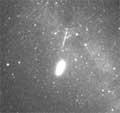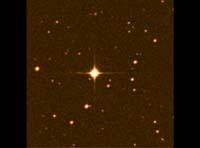Consequences of not wanting to be alone
2009/12/06 Lakar Iraizoz, Oihane - Elhuyar Zientzia
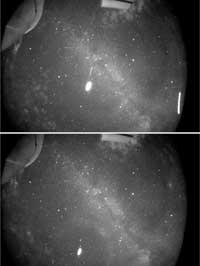
However, this phenomenon did not confirm the presence of UFOs. The images were recorded by the cameras of the Astronomical Observatory of Mallorca and have been explained much more mundane by the experts.
As they have explained, the rocket related phenomenon Atlas V-401, launched in California three hours before all this happened. This rocket should put in orbit a meteorological satellite for the United States Armed Forces.
Because when he made a second orbit around the Earth, the satellite separated from the rocket to take its final orbit, and the rocket headed toward the orbit in which the waste of space accumulates. In this maneuver, in addition, the gases and fuels that were left to the rocket for combustion in the atmosphere were eliminated.
And that's what we saw: it was made up of gases and fuels that were burning a lot of light and the bright spot came out of the great light, meteorological satellites.
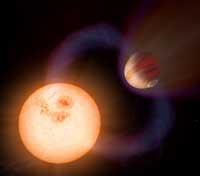
In general, scientists do not know enough planets outside the solar system and do not know if they have the necessary characteristics to have life (Photo: NASA, ESA, A. Schaller).
Seeking life outside the earth
We are convinced that outside the Earth, living beings must be, must be intelligent and want to contact us. And this fearlessness leads the aliens to see in different places the communication efforts.
At the moment, however, such efforts by intelligent aliens have never been demonstrated. We leave beliefs and beliefs for ufologists and ufologists.
But this passion for finding life off Earth has followers among real scientists, astronomers, astrobiologists, etc. They have made numerous attempts and will continue to be made on the planets of the Solar System and on the moons of some planets looking for some indication of life. At the moment, however, all have been in vain.
Outside the solar system, astronomers have also been searching for living things. To do this, the first work consists in finding the residential areas of possible living beings, that is, finding other planets by the universe. A few weeks ago they said that astronomers have discovered 32 new exoplanets. But they are not the only ones they know. About four hundred exoplanets have already been identified.
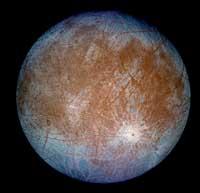
Europe, one of the moons of Jupiter, is a body that can have life. Scientists are studying enthusiastically (Photo: German Aerospace Center (DLR).
However, their identification does not mean, in any way, that they properly know their characteristics. And it is that many, and the last 32, among others, have been detected by transversal techniques. In one of these techniques, for example, experts know that a planet revolves around a certain star because the gravity force of the planet causes small changes in its trajectory.
Therefore, the only thing you know about many exoplanets is that they exist. From there the universe is as dark as it is. And, of course, whether they have life or not...
The truth is that for anyone, it would be surprising, surprising, and disturbing to find living beings outside our Earth. We never know if it will happen. And until we meet, we will continue to turn to the question always: Are we alone in the universe?
Published in 7K.

Gai honi buruzko eduki gehiago
Elhuyarrek garatutako teknologia



